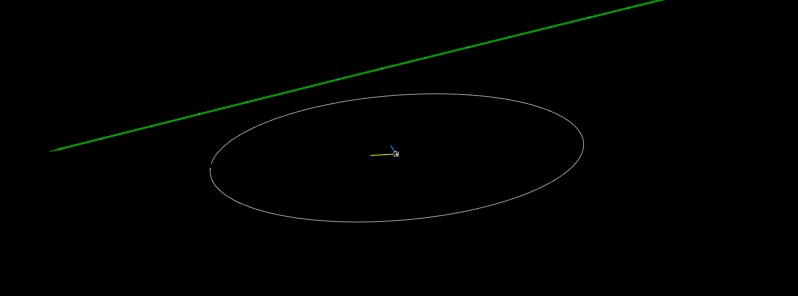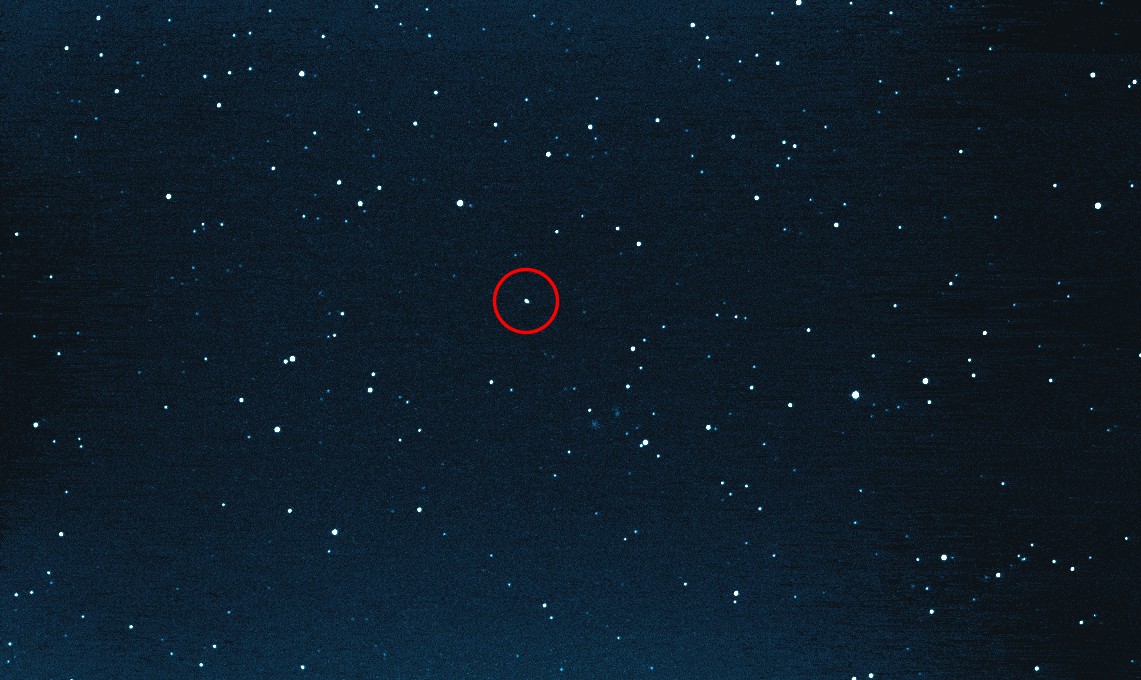Asteroid 2018 GE3 flew past Earth at 0.5 LD

A newly discovered asteroid designated 2018 GE3 flew past Earth at a very close distance of 0.5 LD or 0.00129 AU (~192 981 km / 119 912 miles) on April 15, 2018. This is the 28th known asteroid to flyby Earth within 1 lunar distance since the start of the year and the second largest.
This object belongs to the Apollo group of asteroids. It was first observed at Catalina Sky Survey on April 14, just hours before its closest approach.
[ Ephemeris | Orbit Diagram | Orbital Elements | Physical Parameters | Close-Approach Data ]
Asteroid 2018 GE3 has an estimated diameter between 48 and 110 m (157 and 360 feet) and it flew past Earth at a speed (relative to the Earth) of 29.58 km/s.
This is the 3rd known asteroid to flyby Earth within 1 lunar distance this month and the 28th since January 1. It is also the second largest known object to flyby Earth within 1 LD since the start of the year.
"According to Wikipedia, 2018 GE3 is the largest known asteroid to pass that close to Earth in observational history," said amateur astronomer Michael Jäger. "It was shining like a 13th magnitude star at the time of my observations."
Jäger video-recorded the space rock rushing through the southern constellation Serpens:
Asteroid 2018 GE3 by Michael Jäger. Click the image or here to load the animation.
For comparison, an asteroid that exploded some 29.7 km (18.5 miles) above the Russian city of Chelyabinsk on February 15, 2013, damaging over 3 000 buildings and injuring over 1 500 people (mostly by broken window glass), had an estimated size of approximately 20 m (65 feet). Its light was brighter than the Sun, visible up to 100 km (62 miles) away.
Chelyabinsk asteroid, officially named Chelyabinsk meteorite, was undetected before its atmospheric entry, in part because its radiant was close to the Sun.
Check your speakers. Loud asteroid explosion on video.
In the hours following the visual meteor sighting, a 6-meter (20 feet) wide hole was discovered on Lake Chebarkul's frozen surface and scientists from the Ural Federal University collected 53 samples from around the hole the same day it was discovered.
Reference
Asteroid 2018 GE3 at Minor Planet Center; at CNEOS
Featured image: The green line indicates the object's apparent motion relative to the Earth, and the bright green marks are the object's location at approximately one-hour intervals. The Moon's orbit is grey. The blue arrow points in the direction of Earth's motion and the yellow arrow points toward the Sun. Credit: Minor Planet Center.


Hi – actually it also could be the Earth who has shifted axes in it’s Rotation and Poleshift. The Esrth allways Will react in incomming threaths from Space. Movements cannot be Static.
Best regards – Steen.